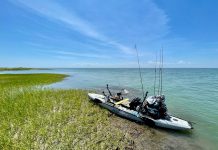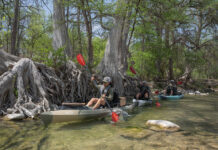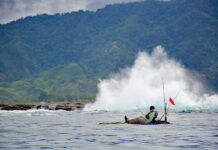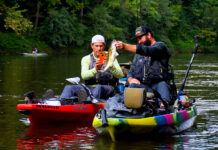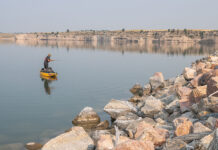The pile of camping and fishing gear in the shuttle parking lot looked like we were preparing for a three-month excursion instead of a three-day fishing trip. But we planned to float and fish the remote Tallapoosa River in Tallassee, Alabama, with no chance for support so we were prepared for anything.
From Heaven to Hell on the Tallapoosa River
This trip had been in the planning stages for years. It’s hard to find a group of guys willing to go on a 50-mile fishing trip through Alabama’s Emerald Mountains. The dream adventure became a reality when my friend Robert Grigg, his son Jacob and I talked Jameson Redding of Jackson Kayak and Jeff Little from Torqeedo into joining us.
Of course, the factory guys had some new toys to test out. Jameson brought Jackson’s new Take Two tandem hybrid and Jeff rigged it with a Torqeedo 1103 electric outboard. I was excited because the big boat and electric outboard would be invaluable for scouting fishing spots and zooming upriver.
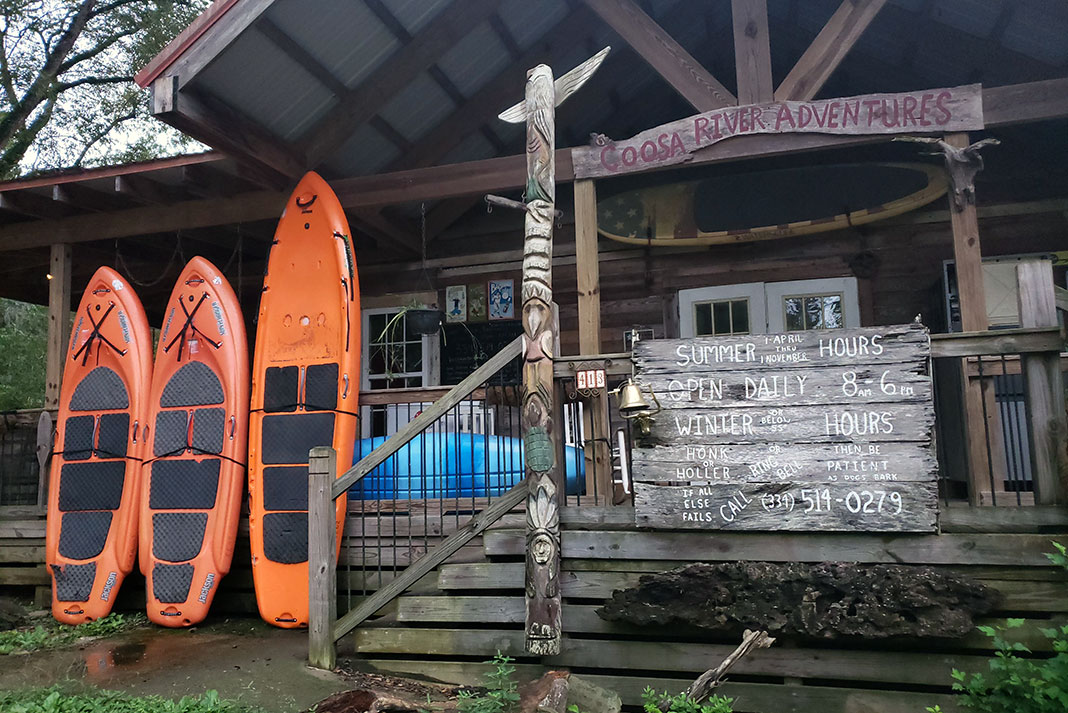
From the meeting point at Coosa River Adventures, we loaded our kayaks on the trailer and filled the shuttle van with cameras, camping gear and fishing tackle for the ride to the launch just below the fall line in Tallassee, Alabama.
Ahead of us waited a 47-mile stretch of the Tallapoosa River ending in Fort Toulouse and the confluence of the Coosa River. The river rolls slowly through farmland, pine barrens and pecan groves. Along the banks, white sandy beaches are great for camping. We expected to see deer, wild hogs and coyotes, but the real draw is a legendary population of hard fighting spotted bass.
Tracking Down Trophy Spotted Bass
While spotted bass don’t get as big as their largemouth cousins, educated anglers know a two-pound spot could drag a four-pound largemouth backwards and never break a sweat. Spotted bass are native to the Mississippi River and spread to the Tallapoosa River where you can also find the subspecies Alabama spotted bass and Kentucky spotted bass.
Spotted bass can be coaxed out of deadfalls, rocky bottom and steep river banks, but the best action comes when the fish school up and go on a feeding frenzy. Among bass snobs, spotted bass are considered a premier target for their finicky approach and aggressive attack. I love them because of the beautiful, slow moving rivers where they live.
Before dropping us at the launch, Coosa River Adventures owner Chris Carter gave us a map of landmarks to track our progress. After recent rains, he recommended we beach our kayaks inland from our tents. “If the water rises, you’ll wake up before the kayaks float away,” he explained.
We thanked Chris for the advice, finished packing our gear, said a prayer and pushed into the slow moving river.
Right off the bat, Jeff used his Torqeedo to run upriver to the base of the falls. Casting a Z-Man Chatterbait into eddies and current seams below the falls, he hooked into a trophy 20-inch spotted bass.
By the time Jeff landed and released the first fish of the trip, the rest of the crew had floated a mile downriver.
After Jeff shared the story of his catch, I switched to a Chatterbait and cast into every swirl and eddy I passed. The lure change resulted in a small largemouth and a feisty spotted bass.
Tallapoosa River Tackle
The problem with camping and fishing is I can’t bring 50 pounds of tackle. On this trip I limited myself to two spinning rods and two baitcasters with a focused sampling of my favorite lures.
Since the primary forage on the Tallapoosa is shad and crawfish, I packed swimbaits, Chatterbaits and jigs. My river staple colors are usually white or white and chartreuse and it is hard to beat the standard ⅜-ounce Chatterbait, which is versatile enough to fish just about any depth of water and comes through stumps without a snag.
My favorite jig is a Strike King Bitsy Bug in green pumpkin or Okeechobee craw tipped with a small trailer like a Baby Paca Craw. The smaller jig imitates a crawfish.
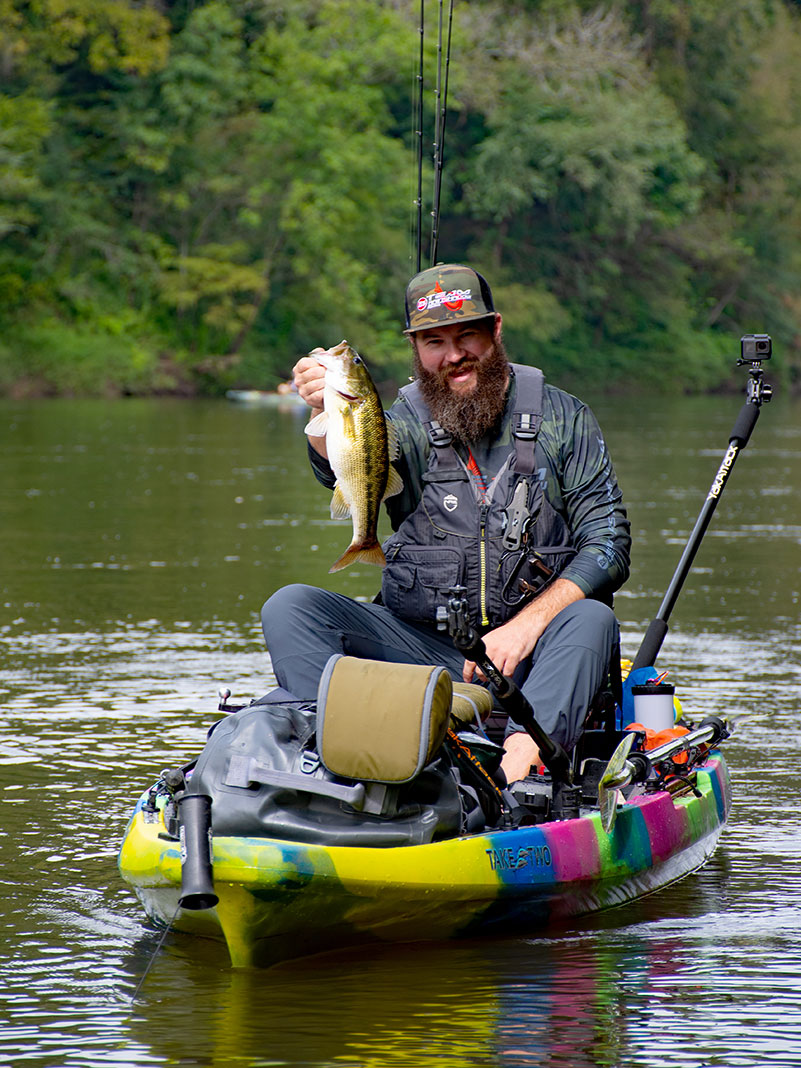
Most of the time, I worked the Chatterbait. When I came across a brush pile or rocky area, I would slow drag the jig around the perimeter. If I encountered a school of bass actively feeding, I switched to a Baby Bull Shad swimbait for fast action.
I never hit the water without a trick worm or Senko. Skipping a worm under overhanging trees and fallen logs is the best way to work the river banks. I land the lure close to the bank and pull it across the surface until it crosses deep water. Then, I let the worm sink. Even a finicky bass can’t resist a slowly sinking worm.
We spent the first few hours fishing and catching, each of us celebrating when we landed a trophy spotted bass. With 13 miles of river to cover before the first camping spot, time was not on our side. At the nine-mile mark, we decided to put up the rods and cover some water.
Scouting a Safe Spot to Camp
The first camp spot was a long sandy beach with a gentle slope on the leading edge and a steep drop on the backside. The natural silence made every footstep on the sand produce a gritty crunch. For the first time, I noticed the peace and quiet free from manmade machines buzzing by.
In a few minutes, we finished setting up our tents and unloading gear. Jacob had a small fire going with twigs scavenged from the beach so Jeff and I walked down the beach to search for firewood.
As I broke dry branches off a downed tree, I flushed a large cottonmouth snake from its hiding spot. I froze in place until Jeff confirmed the dangerous snake had slithered away into the brush. “All part of the adventure,” I tried to chuckle at the close call.
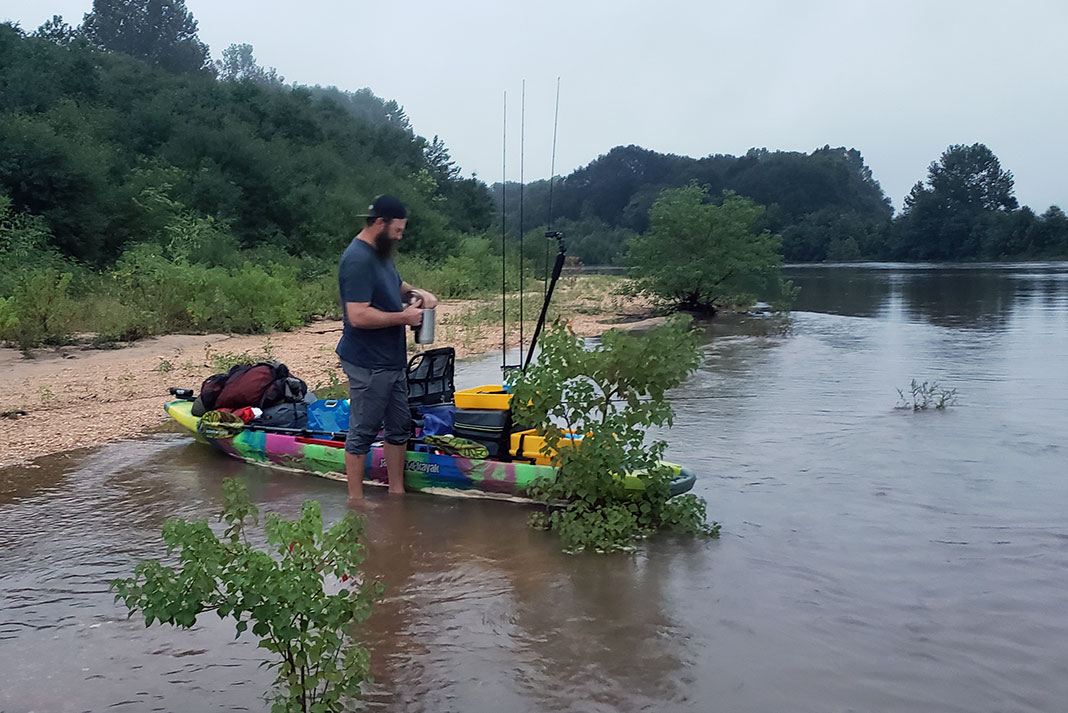
As the sun set and the river water turned black, we sat around the campfire reliving the day’s memories and making a plan for the next day.
From the dark forest, the chilling call of barred owls echoed up and down the river banks. I mimicked the call, “Who cooks for you, who cooks for y’all!” Immediately, my call was answered by challenges from owls surrounding our camp. After paddling and fishing all day, sleep came easily despite the owl cacophony.
The next morning, I woke up early and fired up my Kelly Kettle to heat breakfast and coffee. Before the trip, I prepacked meals in foil packs to cut down on gear and cooking time.
Breakfast was Conecuh sausage and scrambled eggs. I placed the packet over the fire and listened to the contents sizzle inside. Opening the hot foil pack, a cloud of steam carried the smell of chargrilled eggs and spicy meat. The enticement brought the rest of the campers out of their tents.
Day Two of Tallapoosa Fishing
After breakfast and teardown, we hit the water. Facing 20 miles to cover, we strategically picked out the best places to fish along the way.
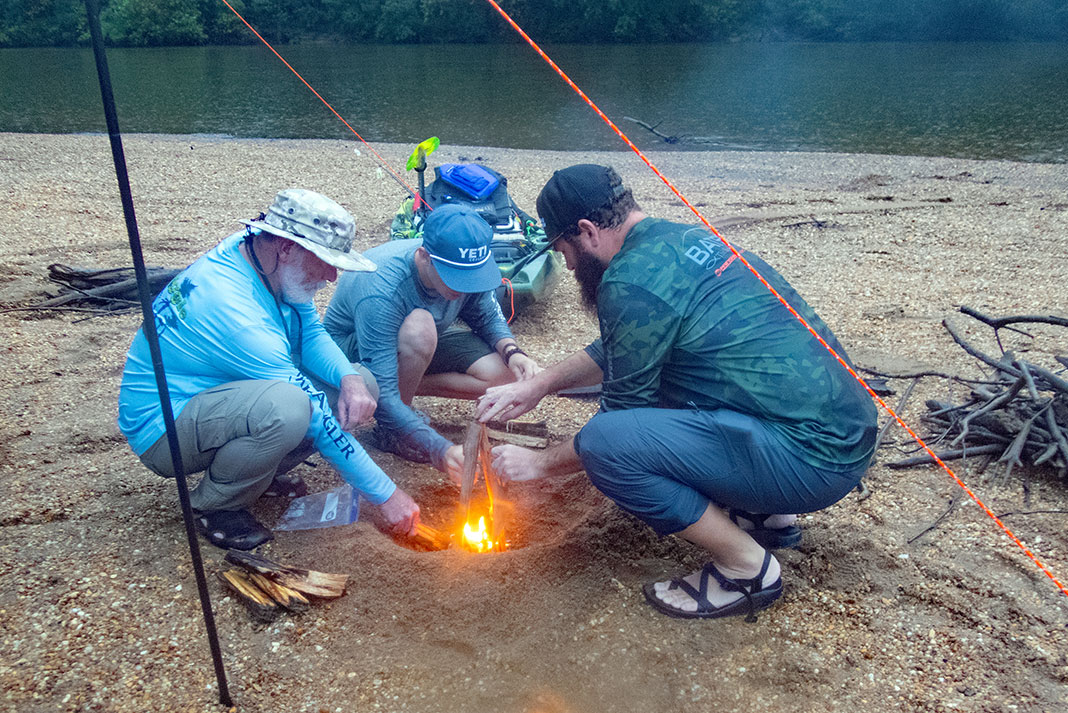
When we passed a flooded backwater, I pitched my white Chatterbait into the current seam and had a solid hit. A big bowfin exploded from the river surface and promptly threw my lure at my face.
A few minutes later, Jeff pitched a black and blue jig and trailer near the base of a flooded clump of brush and a nice spot crushed it.
While I was drifting downriver, I caught sight of a tiny white spot zipping among the colorful wildflowers along the river bank. A few seconds later, the flicker reappeared and I watched a rare bright white leucistic hummingbird dance from flower to flower.
Around noon, we pulled into a creekmouth to stretch our legs and grab a bite to eat. I cast my Senko into the creek and it was slammed by a big fish that pulled a short run of drag before coming unbuttoned. I pouted over the loss for a little bit, then reached into my bag for some grub.
Since lunch is usually on the move, I typically have a bowl of raw oats mixed with peanut butter and molasses or honey. Add a bite of jerky or a cheese stick and I have a filling meal to power me through the rest of the day.
Rain Threatens the Trip
After lunch, as we were reentering the river, the sky filled with gray clouds and thunder rumbled in the distance. I was a little nervous: lighting is always spooky and afternoon storms can quickly turn gnarly.
I checked the radar on my weather app and saw a huge storm upriver with bands of rain heading towards us. I reached for my rain gear and realized I had left the bag in the shuttle van.
I would have to live with the mistake for the next 14 miles of paddling. “All part of the adventure,” I muttered as rain soaked me to the bone.
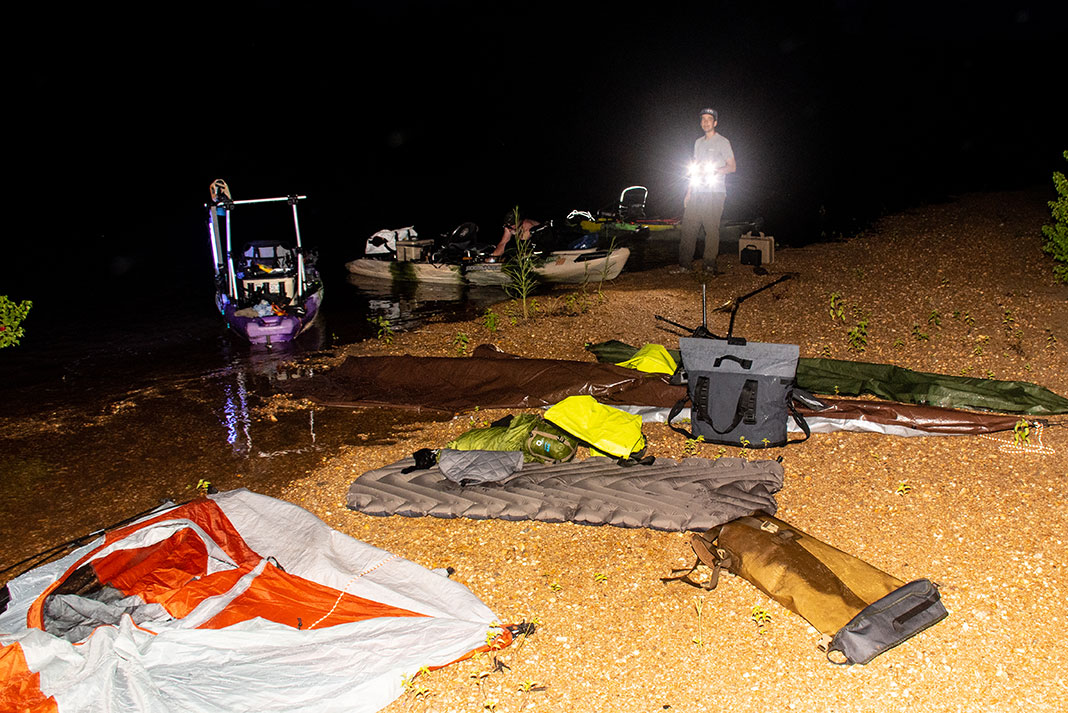
By the time we reached the next camp, the rain had slowed to an annoying drizzle. We figured the river may rise a little after the rain, so we pulled our boats as far up the bank as we could.
In anticipation of more rain, we covered our tents with tarps and used the kayaks as tie-downs. Somehow, Jacob managed to start a fire. We attempted to dry out and reset.
Consulting his smartphone, Jeff checked the forecast and river levels. In the morning the river was at 9,000 cubic feet per second. By evening, the water had dropped to 3,000 cfs so we felt confident our camp would stay dry.
After sunset, the owls continued their calls. As we sat around the fire, we heard a blood-curdling scream followed by breaking branches and then subtle whimpers and silence. In the flickering gold light, we looked at each other and wondered what poor creature had lost its life. As the owls returned to their chorus, I apologized ahead of time for my snoring and headed to my tent and a good night’s sleep.
“We have water!”
The next morning I woke up before dawn but decided to lie in my sleeping bag listening to the owls calling and the sounds of my friends sleeping. I heard Robert shift in his tent and I felt my tent move. I figured the tents were close together until I heard a splash. Jeff exclaimed, “We have water!” and I realized my tent was floating.
In an instant we were out of our tents in our underwear standing shin deep in swiftly flowing water. The night before the river was 60 feet away and five feet below.
Before we had time to survey the situation, the tarps collapsed and the whole camp started floating downriver.
I ran to my kayak and flipped on my Nocqua lights to illuminate the wreckage. We didn’t know how much water was coming or when it would stop. Frantically, we grabbed gear and moved it to dry ground. But as soon as we reached high ground, the high ground flooded.
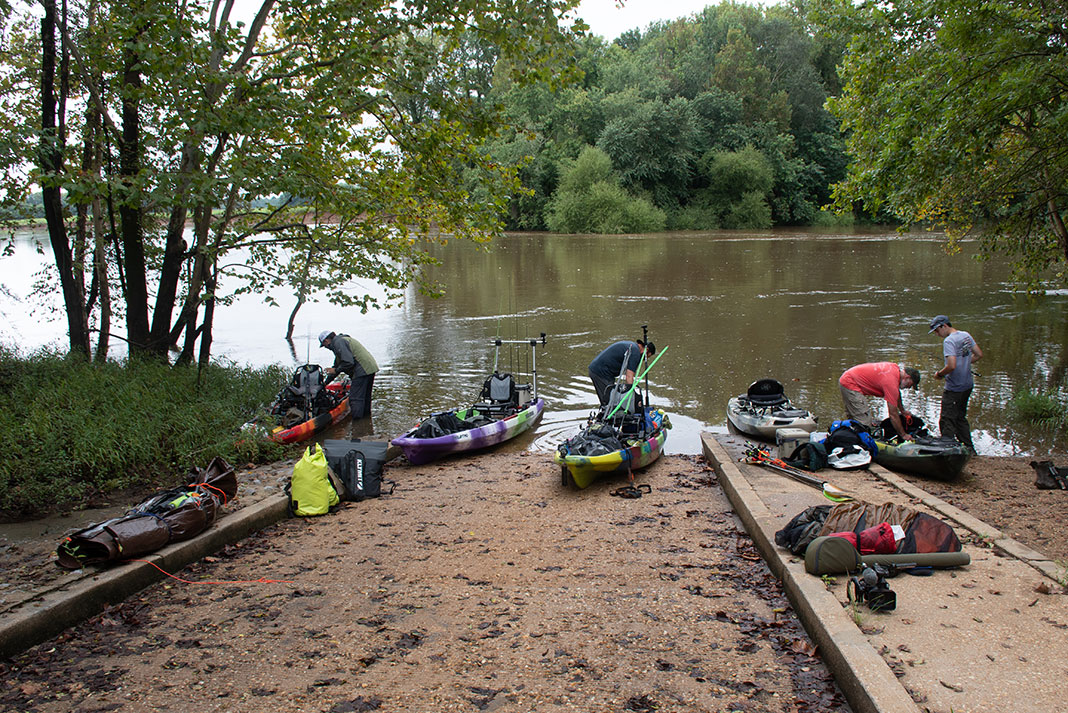
In desperation, we piled as much gear as we could on the kayaks and kept working towards the river bank. Rafts of sticks and foam were floating by and I thought about the fat cottonmouth I saw the night before.
We had to work quickly while keeping our wits about us. As the morning light brightened, the water seemed to slow. Jeff checked the river gauges on his smartphone and discovered the 3,000 cfs at bedtime turned to a raging 17,000 cfs when the dam opened floodgates to relieve water from the rainstorm.
The water around us was knee deep, muddy and moving fast. With our gear collected and loaded, we pushed our soggy rigs out into the flow to start the 14-mile last leg.
Fishing was out of the question. The trees along the bank had turned into dangerous strainers. I could hear the current ripping through the branches. We stayed in the middle of the river and kept track of each other.
When the landing at Fort Toulouse came into view, I was tired and wet but thankful we didn’t require rescue. As we floated five wide down the swollen river, I turned to my friends and smirked, “All part of the adventure.”
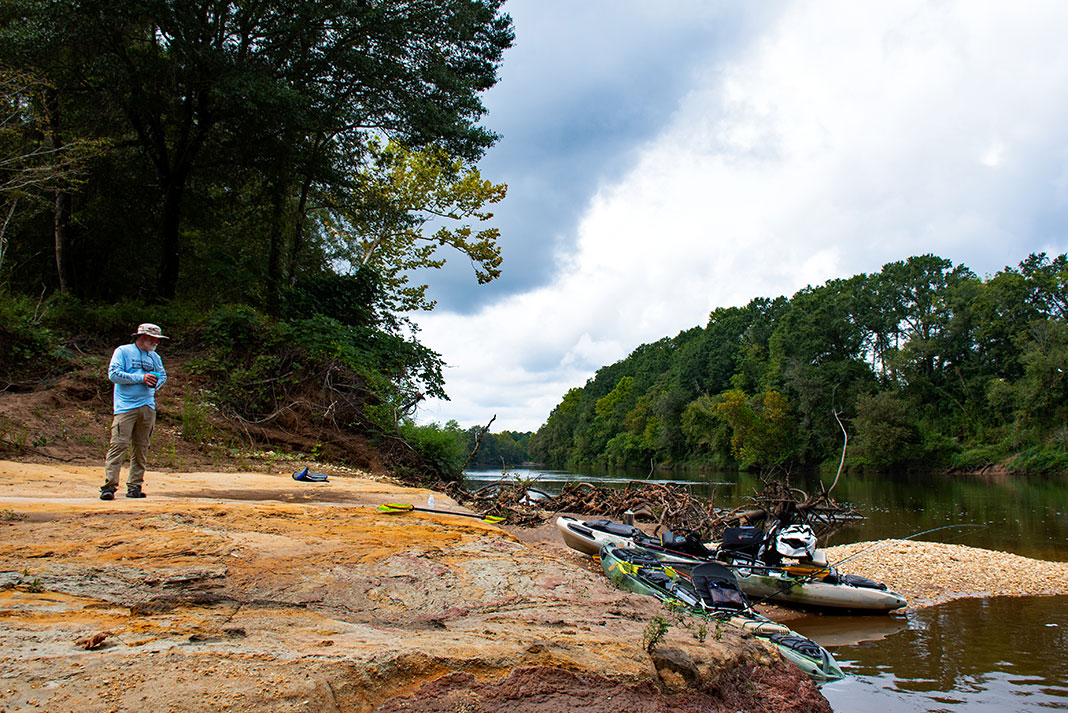
Chris Funk is a Jackson Fishing pro staff angler and longtime Kayak Angler contributor.
50 miles into the unknown for trophy fish and adventure. | Feature photo: Chris Funk

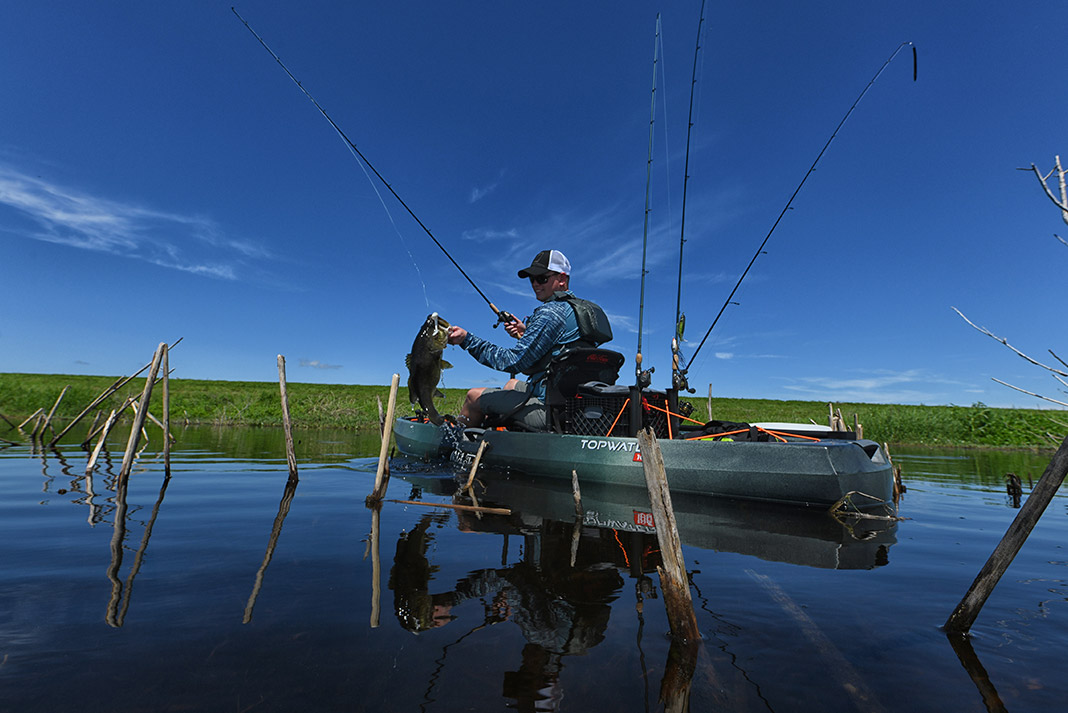
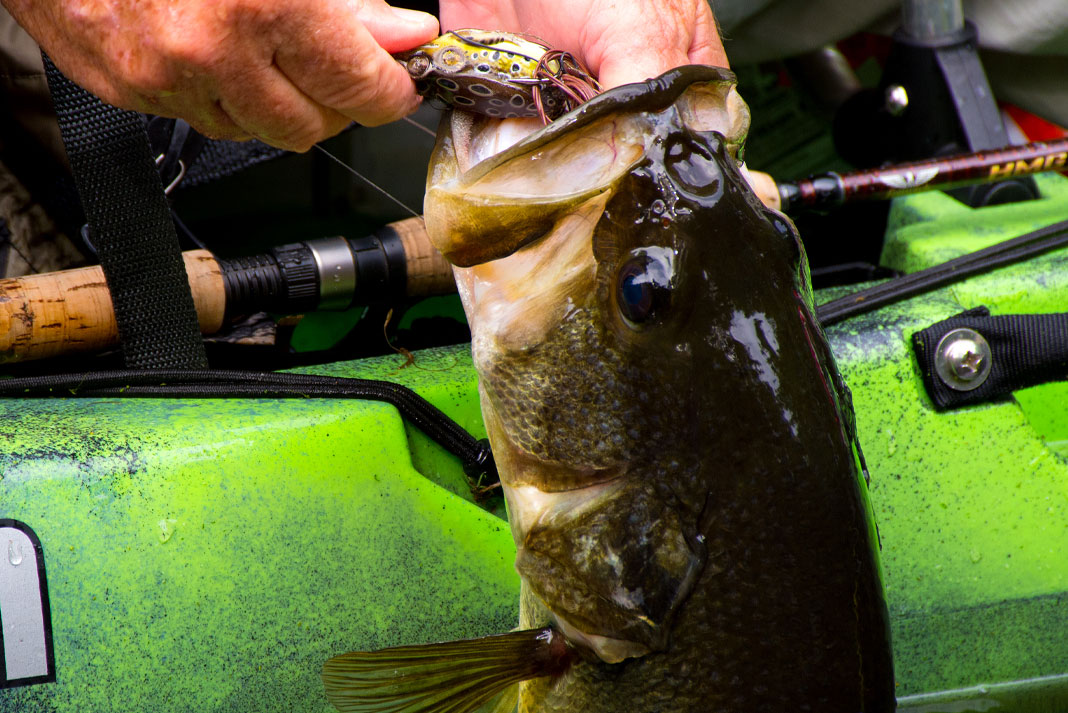
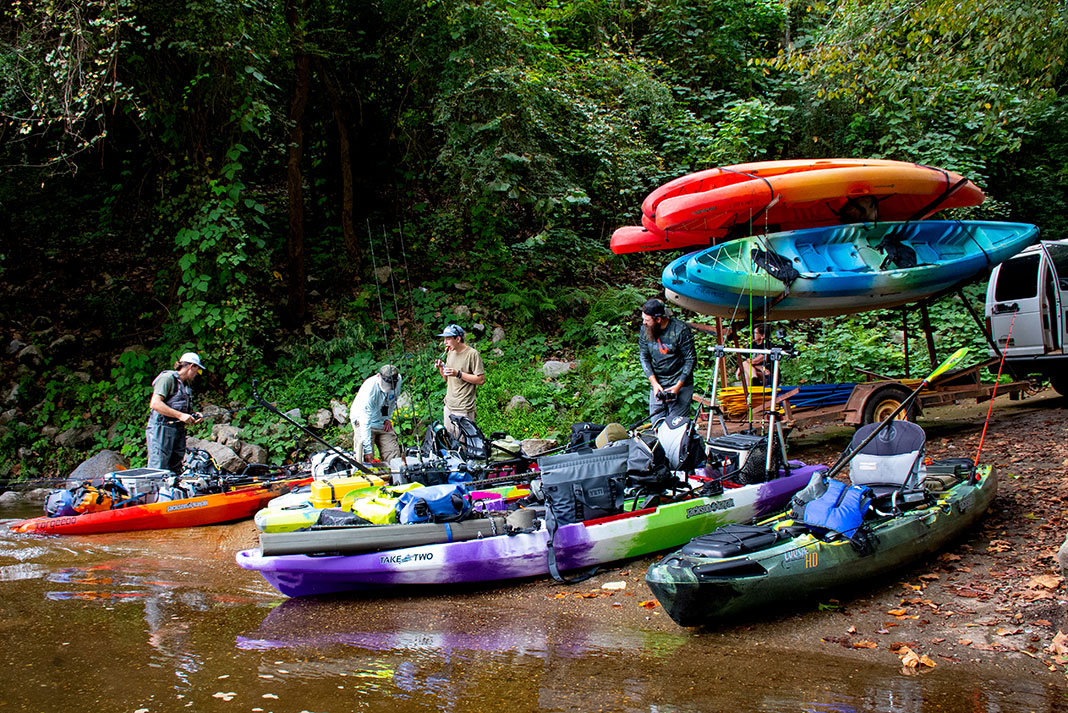
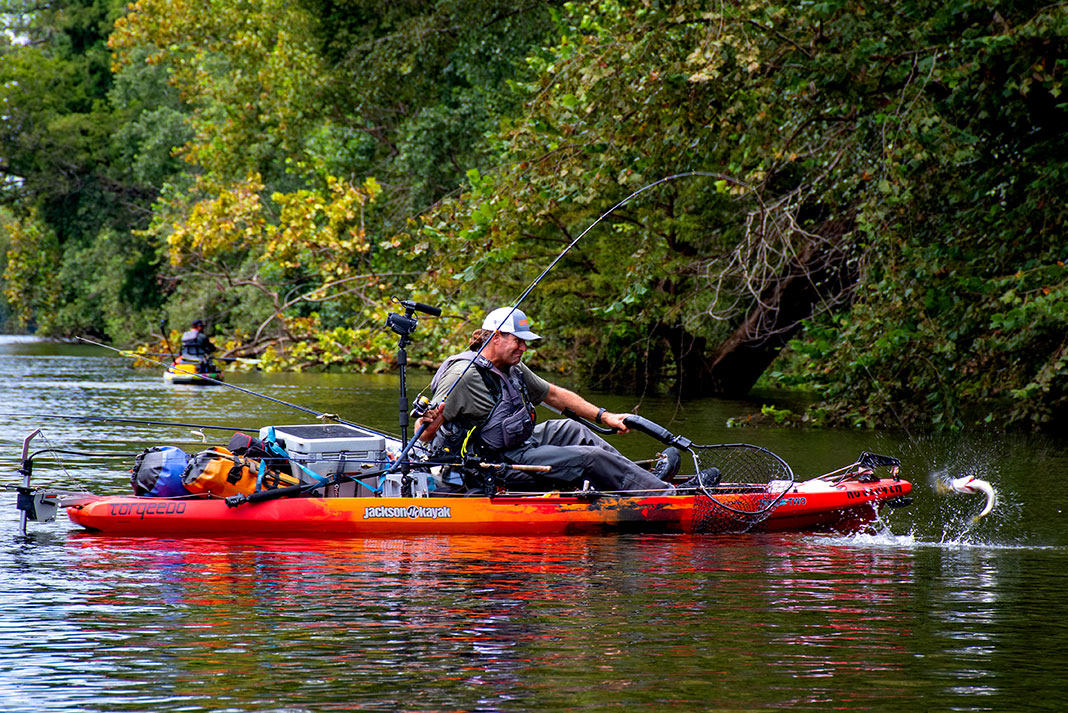
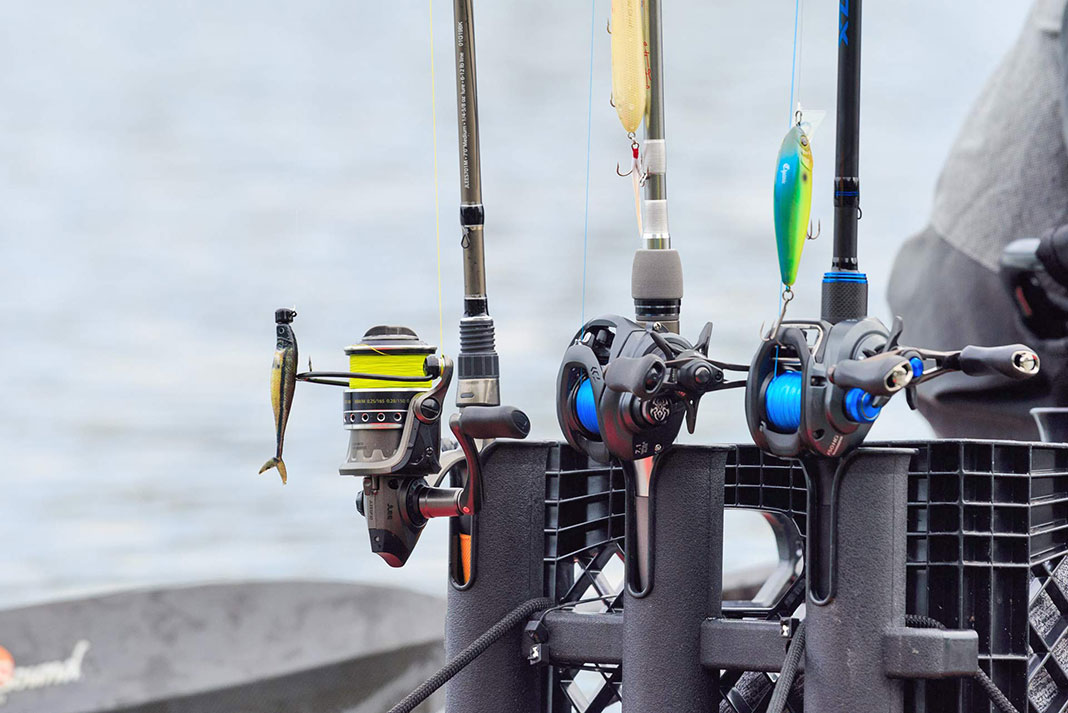
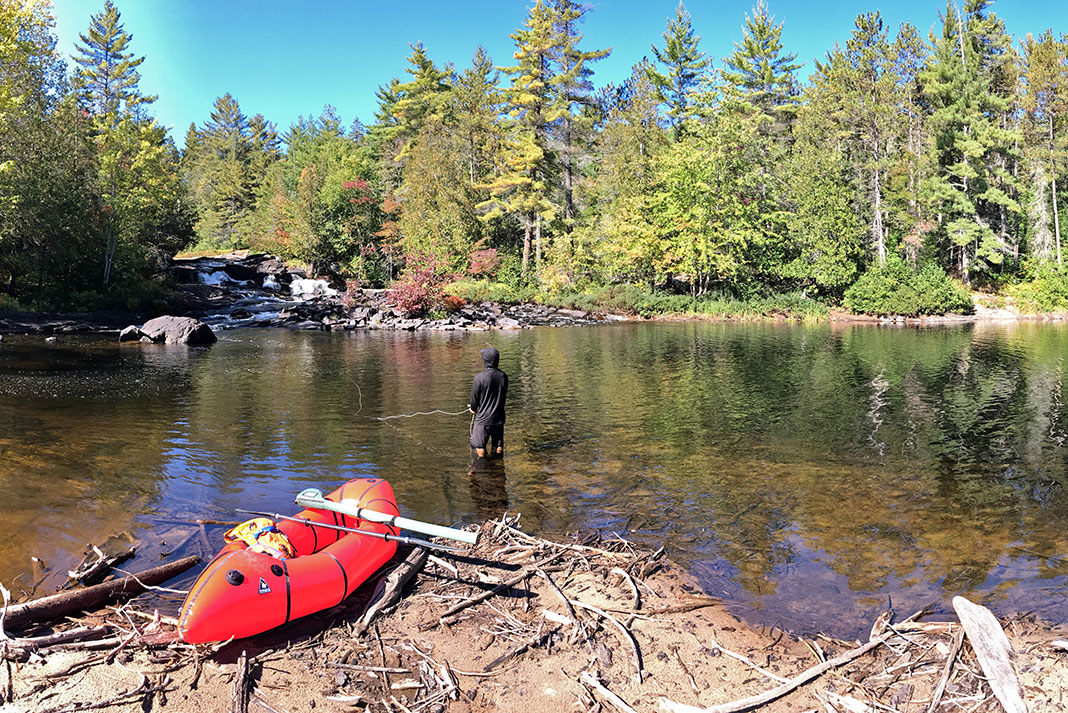
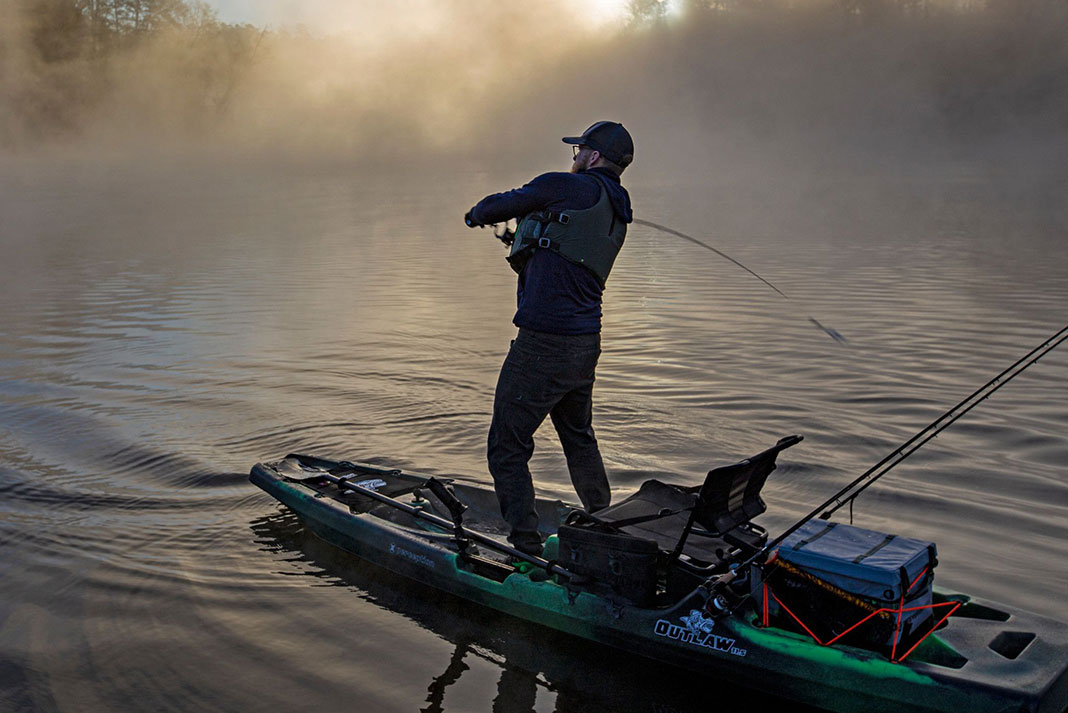
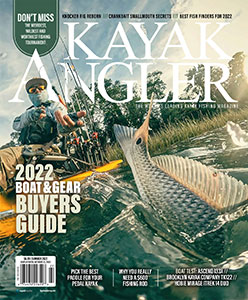 This article was first published in the Summer 2022 issue of Kayak Angler Magazine.
This article was first published in the Summer 2022 issue of Kayak Angler Magazine. 